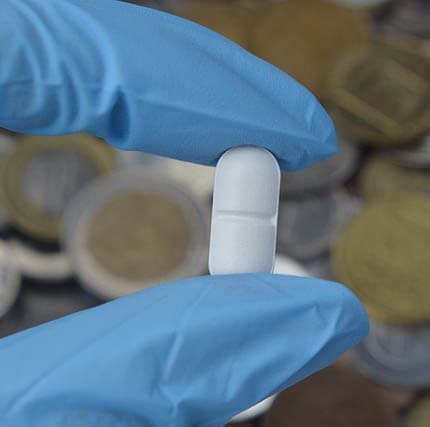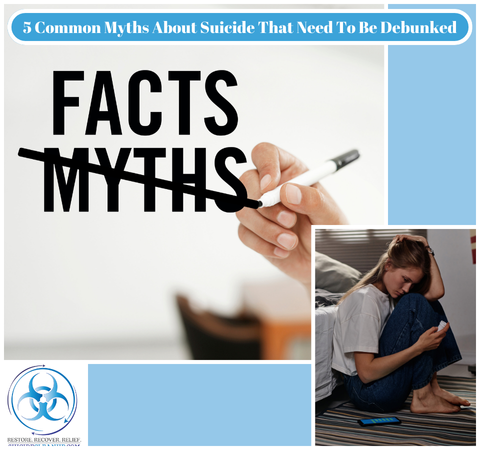
Recognizing the Warning Signs of Suicide
April 6, 2023
What are Self Affirmations?
April 13, 2023Suicide is a growing public health crisis that affects millions of American lives and causes at least 41,000 preventable deaths annually. Substance related overdoses (including illicit drugs and prescription opioids) are also considered a preventable public health crisis that claims more than 106,000 Americans annually. And, tragically, opioid-related suicides have doubled in the last 15 years.
There is a likely overlap between the two. After all, drug use is widely believed to be a predecessor. In fact, opioid-related suicides make up an annual average of 20% of all suicidal deaths in the US, with alcohol claiming an additional 22% of all suicidal deaths.
Based on those statistics, it’s certainly evident that substance abuse can increase someone’s risk for suicidal behavior. However, is it due to one’s poor mental health or is it the drug itself that creates the problem? Should the quest in prevention be focused on reducing abuse or eliminating the behavior? Of course, preventing both is equally important. However, understanding how substance use affects one’s mental health can be helpful in preventing suicide or recognizing the signs in a loved one before it’s too late.
How Substances Work in the Body
We know that different substances create different effects on the brain and as a result, a person’s behavior. There are many classes of drugs that alter behavior, including depressants, stimulants, and opioids.
Since every drug interacts with the body differently, and every person’s body is different, it’s fairly complicated to unravel how or even if drugs drove someone to that point, or if the drug caused the ideation.
What we do know, however, is that commonly abused drugs can be physically taxing on the human body, and prescriptions should be closely monitored by a trained doctor.
Depressants
Depressants affect a person’s behavior by depressing the CNS (Central Nervous System). Some examples of potentially dangerous depressants include alcohol, tranquilizers, barbiturates, and benzodiazepines.
For better understanding, compare a dimmer light switch to the use of depressants. The more depressants one takes, the lower the light switch gets. Taking too much puts the person at lowering the light switch to the point the lights go completely out, or medically, resulting in near-fatal respiratory failure.
Opioids
Opioids (or opiates) are known for one of two things: painkillers or hundreds of thousands of fatal overdoses a year. On a biological and physiological level, opioids also cause central nervous system depression by binding to specific opioid receptors in the brain. They differ enough to be separated from depressants because opiates also stimulate parts of the central nervous system (CNS)–as stimulants do.
Stimulants
Stimulants like amphetamines, caffeine, cocaine, and nicotine do the opposite by stimulating the nervous system. This places greater stress on things like the cardiovascular system: including the veins, and heart. Unlike opiates or depressants where higher doses pose clear risks of a fatal overdose, the damage of higher stimulant doses is more difficult to predict. The type of drug can also greatly determine the type of damage. For example, caffeine is a relatively harmless stimulant, whereas crack cocaine can cause rapid heart rate, anxiety, delusions, seizures, and paranoia. Its difficulty in knowing how much is too much causes certain stimulants to be considered more dangerous than others.
What We Know About Drugs and Suicidal Behavior
Drugs affect us in all different ways, sometimes for the better, sometimes for the worse. Since all drugs interact with the body differently, and each body has different tolerances and reactions to certain drugs, it’s difficult to pinpoint if abuse causes suicidal behavior or if it’s self-medication with the wrong dosage and drug.
What we do know about abuse is that it can certainly play a part in someone’s suicidal behavior if they are already prone or at risk of suicidal ideation, have had a previous suicide attempt, or has a history of mental health illness.
Research Implications of How Substances Affect Suicidal Behavior
Whether or not drugs are a gateway to suicidal ideation remains up for discussion. Despite the substantial amount of substance-related suicides, there is little research on what the association may be, especially for certain types.
An older study from 2004 found that where drugs are concerned, the most suicide attempts were by children between the ages of 9-17 that had used without dependence. The problem with the study is that it doesn’t address age groups over 17 and suicide rates were nearly 35% below where they are today. As such, today’s culture, prevalence, or potency of today’s drugs could mean the results would be significantly different if the study was replicated today.
Research on How Alcohol & Opioids Affect Suicidal Behavior

Alcohol and opioids are the most commonly associated with substance related suicides.
A recent study found that alcohol and opioids appear to be the most common culprit in substance-related suicides. Both were found to impair parts of the brain and neurobiological pathways responsible for emotional regulation, decision-making, and behavioral control. The study also implied that biologically, someone may try to self-medicate with alcohol to divert themselves from self-harm urges. Unfortunately, self-medicating with alcohol can cause damage to areas of the brain that are helpful in preventing someone’s suicidal tendencies.
Opioids place a strain on the brain as well, although the changes are slightly different than alcohol damage. The brain goes through many changes as an individual develops a greater tolerance to opioids. Like alcohol, there is damage to areas of the brain responsible for decision-making and emotional regulation. The difference is that the damage appears centered around more specific places and opioids do additional damage to specific receptors in the brain responsible for inhibiting impulsive behavior. The study also implied that opioids may create more sensitivity in receptors that have been speculated to be responsible for suicide and dysphoria. Additionally, opioids interrupt serotonin and pain sensitivity.
Like alcohol, opioids are not the clear origin for suicidal ideation, however, their use and abuse can clearly contribute to putting someone at risk.
So, Do Substances Put You At Risk?
Substance abuse and suicide have a complicated and interconnected relationship. Yes, alcohol abuse can contribute to the risk of suicidal behavior. However, suicidal individuals can also be more likely to abuse.
Alcohol and other drugs can decrease inhibitions, increase impulsive behavior, and prevent good judgment, leaving individuals more vulnerable to self-harm and suicide. Drugs can exacerbate underlying mental health or depression and anxiety symptoms, all of which contribute to suicidal tendencies.
On the flip side, substance abuse may be used as a way to cope with emotional pain and/or numb their struggles. Individuals with underlying mental health conditions may abuse to self-medicate, although the unknown potency or contents of illicit drugs may worsen their symptoms and create a vicious cycle of addiction and suicidal thoughts.
If you suspect a loved one is abusing and/or suffering from depression, offering help could help save their lives. Mental health and abuse are serious issues that require professional help, though the individual must be ready to receive such help. Try to intervene with them in a supportive, caring, nonjudgmental way, and offer to assist them in finding rehab.
Help Resources
988 Suicide & Crisis Lifeline
Call or Text 988
National Helpline
1-800-662-HELP (4357)
Disaster Distress Helpline
1-800-985-5990
Find a Treatment Facility
findtreatment.gov


